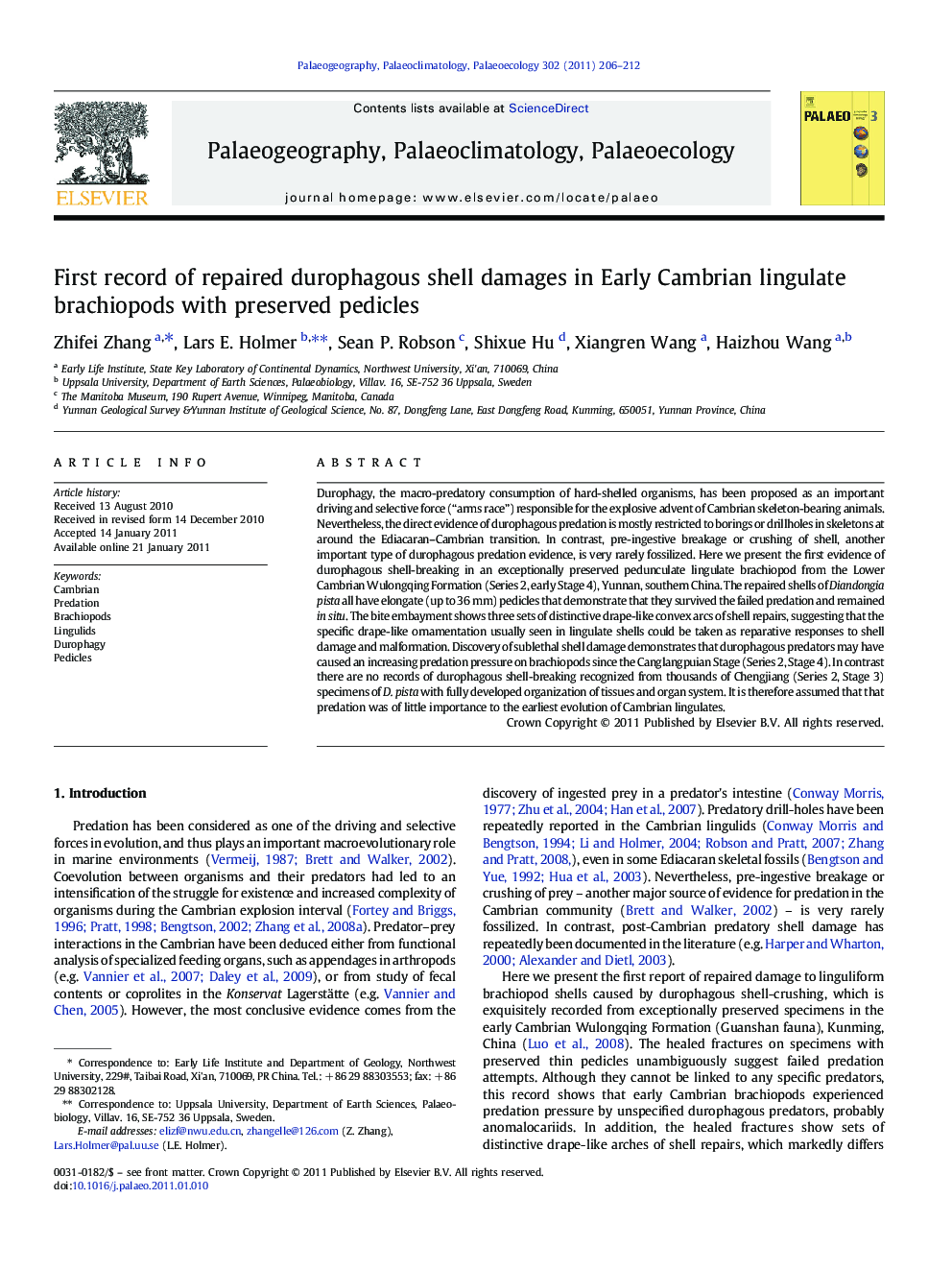| کد مقاله | کد نشریه | سال انتشار | مقاله انگلیسی | نسخه تمام متن |
|---|---|---|---|---|
| 4467191 | 1622260 | 2011 | 7 صفحه PDF | دانلود رایگان |

Durophagy, the macro-predatory consumption of hard-shelled organisms, has been proposed as an important driving and selective force (“arms race”) responsible for the explosive advent of Cambrian skeleton-bearing animals. Nevertheless, the direct evidence of durophagous predation is mostly restricted to borings or drillholes in skeletons at around the Ediacaran–Cambrian transition. In contrast, pre-ingestive breakage or crushing of shell, another important type of durophagous predation evidence, is very rarely fossilized. Here we present the first evidence of durophagous shell-breaking in an exceptionally preserved pedunculate lingulate brachiopod from the Lower Cambrian Wulongqing Formation (Series 2, early Stage 4), Yunnan, southern China. The repaired shells of Diandongia pista all have elongate (up to 36 mm) pedicles that demonstrate that they survived the failed predation and remained in situ. The bite embayment shows three sets of distinctive drape-like convex arcs of shell repairs, suggesting that the specific drape-like ornamentation usually seen in lingulate shells could be taken as reparative responses to shell damage and malformation. Discovery of sublethal shell damage demonstrates that durophagous predators may have caused an increasing predation pressure on brachiopods since the Canglangpuian Stage (Series 2, Stage 4). In contrast there are no records of durophagous shell-breaking recognized from thousands of Chengjiang (Series 2, Stage 3) specimens of D. pista with fully developed organization of tissues and organ system. It is therefore assumed that that predation was of little importance to the earliest evolution of Cambrian lingulates.
Research Highlights
► We present the earliest-known record of repaired predatory attack on brachiopods.
► This is the first evidence of a non-boring durophagous predator in the Palaeozoic Era.
► The healed scars show sets of drape-like archs, suggesting failed predatory attempts.
► In contrast, no shell damage is recorded in thousands of Chengjiang specimens.
► We infer that predation on brachiopods increases rapidly since the Canglangpuian Stage.
Journal: Palaeogeography, Palaeoclimatology, Palaeoecology - Volume 302, Issues 3–4, 15 March 2011, Pages 206–212